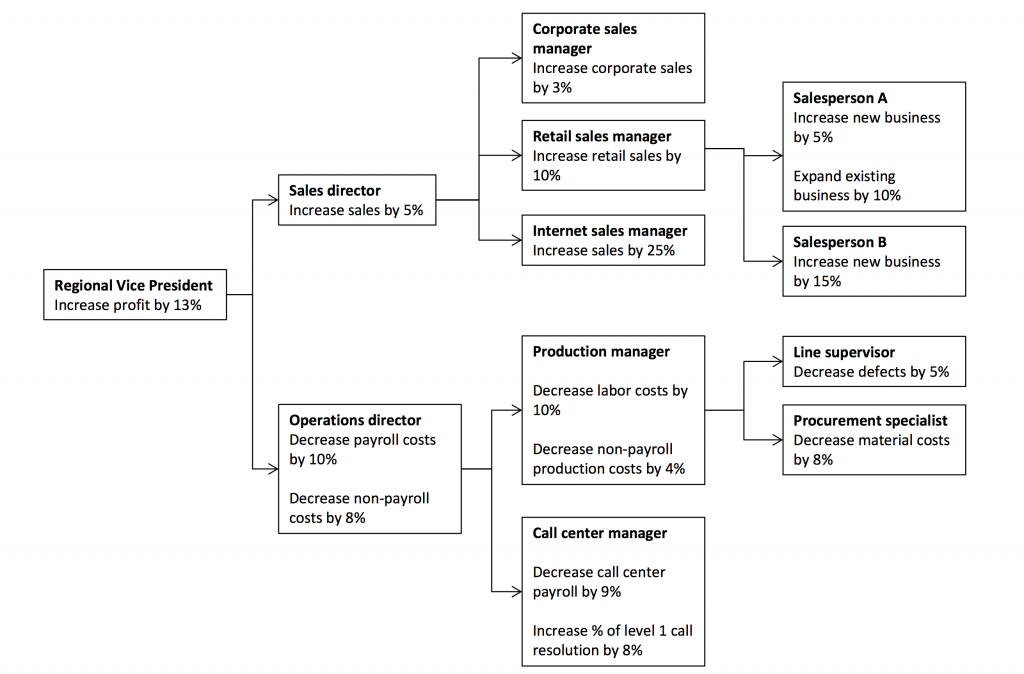Good goals are helpful. They provide focus for teams and create line of sight between an individual’s work and the broader success of the business.
However, while everyone in an organization might be working toward the same goal, each person should have his or her own unique goal.
A problem that I see in many organizations is when a leader “avalanches” his or her goals.
An avalanched goal is one that doesn’t change as it moves through the organization.
For example, suppose a regional vice-president might have a goal of increasing profitability by 13%. Avalanching occurs when he or she gives that same goal to his or her director of sales and director of operations. The avalanche builds when those two people then pass the same goal along to their various managers who then pass it on to their front-line employees.
In the end, the final person with the goal is the one who has no one else to which to pass it. That person is also in the least likely position to fulfill the goal due to his or her scope of responsibility and influence.
Avalanched goals aren’t helpful.
They reduce clarity and make it difficult for people to know where to focus. After all, if everyone in the organization has the same goal, despite having different jobs, what are they supposed to do?
They are also unfair and demotivating. If a person only controls 1/10th of an outcome, how can he or she be held accountable for that entire outcome?
More importantly, they can actually reduce accountability. Each person in the chain holds the person below him or her accountable for meeting the one goal while not attending to it him or herself. The only person who winds up actively working toward it is that poor low-level employee stuck at the bottom of the avalanche.
An alternative to avalanching is to truly cascade your goals.
Cascaded goals are also passed down through the organization. However, at each level, the goal is adapted to reflect the unique contribution that supports the higher-level goal.
The idea of cascading goals isn’t new. What’s happened is that leaders have latched on to the first part (passing the goal down through the organization) while abandoning the second part (modifying the goal to reflect a unique contribution). The result is the avalanche.
The key to creating cascading goals is having a clear understanding of how each successive layer in an organization contributes to the one above it.
Here is a simple example of how the profitability goal mentioned earlier might be cascaded.
Using this approach, each person has a specific goal for which they have full control. His or her individual area of focus and contribution are clearly laid out. Most importantly, there is clarity around who specifically is accountable for each outcome.
Cascading goals also show each person how his or her goal contributes to the broader goals of the organization. This creates line of sight as well as engagement.
This example showed how to cascade just one goal. Leaders should go through this same process for each of his or her goals.
The people who report to you should not have the same goals as you. They should each make contributions that, when taken together, help you achieve your goal(s). Take time to provide each of your people with a clear, unique, and specific goal.
———————
Brad Kolar is an executive consultant, speaker, and author for Avail Advisors. Avail can help you create and cascade outcome-based goals. He can be reached at brad.kolar@availadvisors.com


